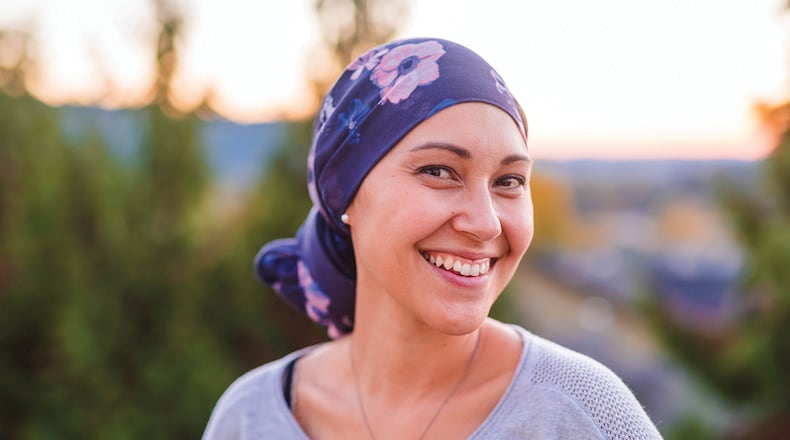Breast cancer treatment depends on the stage of the cancer, personal choices as well as doctor recommendations. Other factors like preexisting conditions or health history also may play a role in determining patients' treatments. In many cases, chemotherapy is included in a treatment plan. Chemotherapy targets fast-growing cancer cells in the body to prevent cancer from spreading and to shrink tumors. However, the American Cancer Society says other normal cells that are fast-growing can be affected by chemotherapy and cause side effects. These cells include blood-forming cells in bone marrow, hair follicles, cells in the mouth, digestive tract cells, and reproductive system cells. This is why many people lose their hair during chemotherapy treatments.
Many women confront chemotherapy-related hair loss with head coverings, and they have various options at their disposal.
- Scarves: Many women like to tie lightweight scarves around their heads. These scarves come in various patterns. Pre-tied scarves that can be pulled on also are available.
- Cloches: A cloche is a fitted, bell-shaped hat that gained popularity in the 1920s and 1930s.
- Turbans: Turban style hats are pull-on options and are knotted or twisted in the front or side. Some may have decorative embellishments on the front.
- Baseball hat: Some baseball hats designed specifically for cancer patients provide more coverage than traditional baseball hats by stretching further down the back of the head and neck. They feature a brim and can offer substantial protection while out in the sun. Other baseball hats may come equipped with artificial or real human hair extensions attached inside of the hat to offer stylish options.
- Wigs: When a hat or scarf is not desirable, women can consider wigs. Wigs can be undetectable and mimic real hair. To simplify choosing a wig, women can bring a picture of their typical hairstyle. Save a lock of hair from the top front of the head where hair is the lightest to match wig color. Make sure the wig is adjustable.
Hair loss is a side effect of some cancer treatments. Finding head coverings can bridge the gap until hair regrows.
About the Author

